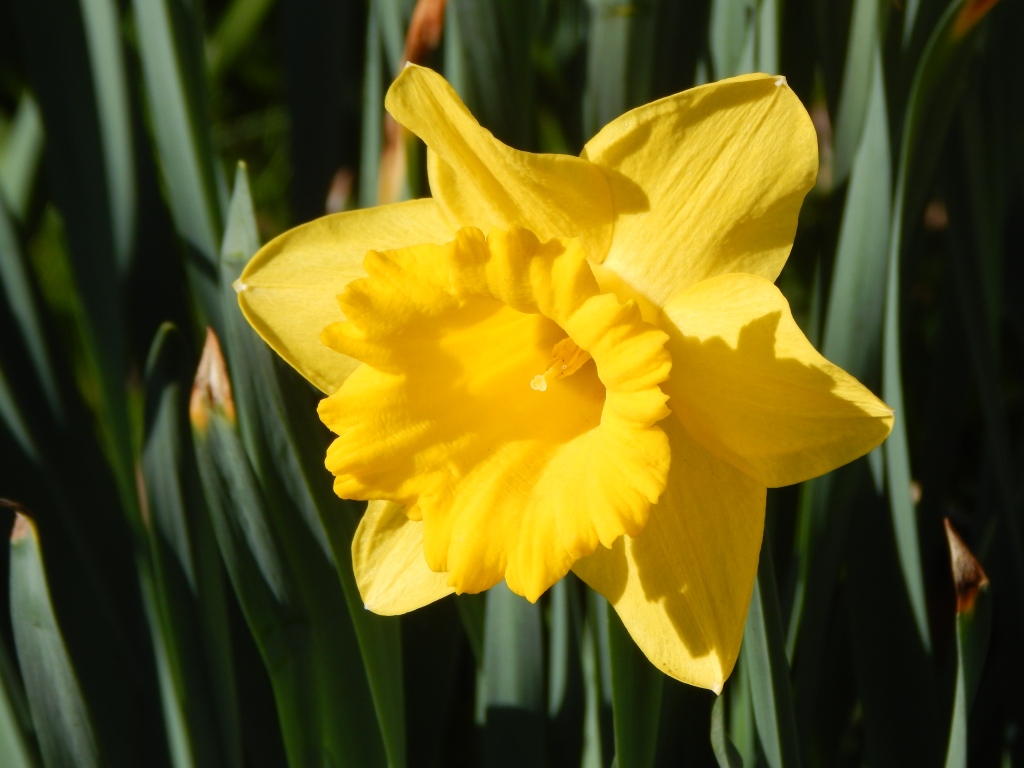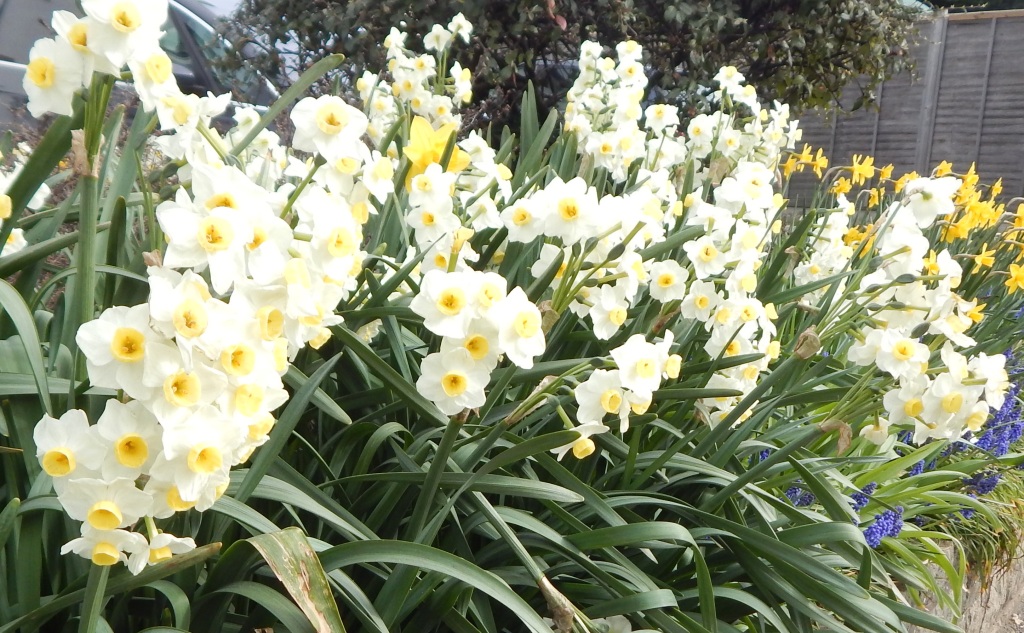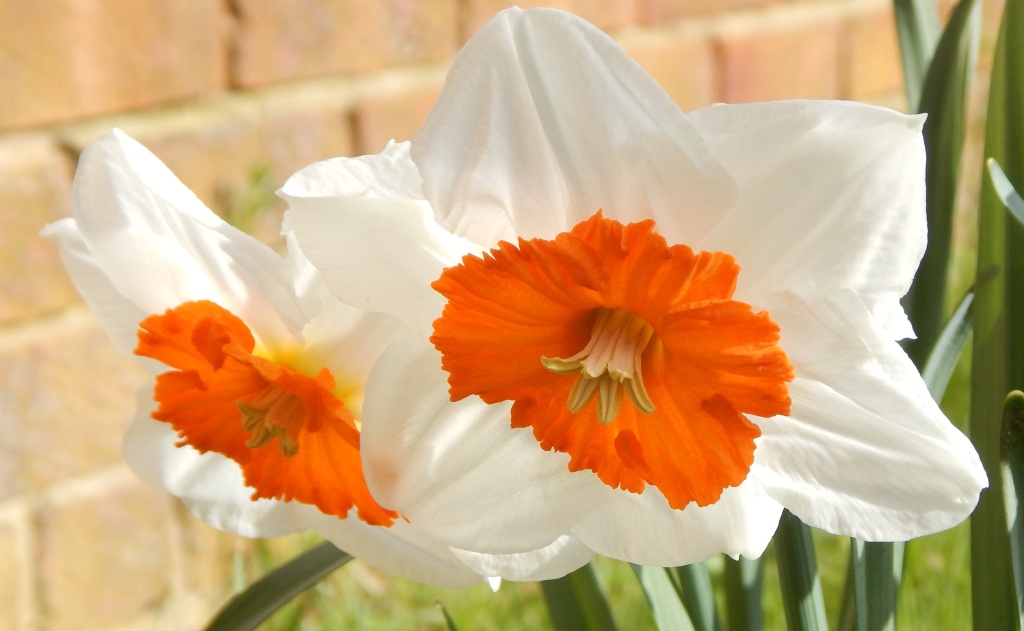
[234] Narcissus pseudonarcissus – Daffodils, Narcissi and Jonquils
Introduction
Narcissus pseudonarcissus is a familiar, common and widespread spring flowering bulb plant that can be called a (Wild) Daffodil. This and other species of Narcissus, in many varieties and cultivars, are widely cultivated as garden plants or as cut flowers – generally just called either Daffodils or Narcissi or Jonquils.
Narcissus pseudonarcissus may be called the Wild Daffodil or Lent Lily.
Taxonomy
Kingdom – Plants
Division – Vascular Plants
Class – Angiosperms (Flowering Plants)
Clade – Monocots
Order – Asparagales
Family – Amaryllidaceae
Subfamily – Amaryllidoideae
Tribe – Narcisseae
Genus – Narcissus
Scientific Name – Narcissus pseudonarcissus
It has about forty scientific synonyms.
There are about fifty species of Narcissus and at least sixty hybrids. Many cultivars are available.
Name
The name Narcissus is often said to be derived from the youth in the Greek myth but the word was in use well before this myth. It may come from the Greek word for intoxicating, cognate with narcotic, as Narcissus poeticus, which grows in Greece is said to have an intoxicating fragrance.
Daffodil comes from affodell or asphodel, now a genus of completely different plants – but the name used to be used for the Narcissus. The initial ‘D’ may come from the Dutch definite article by merging ‘de affodil.’ ‘Daffodil’ is used for species and varieties with yellow trumpet-shaped flowers.
Jonquil comes via French from Spanish junquillo, a diminutive of junco, meaning rush or reed. Jonquil is used for Narcissus jonquilla, which does have rush-like leaves.
The name Lent Lily comes from its use as a decoration in Churches during Lent, the period before Easter, and at Easter. Its flowering period make it available at just the right time. (Dates in the Christian calendar are complicated. The date of Easter is determined by a notional definition of phases of the Moon in the Holy Land. It has led to discussions and disagreements and was one cause of the split between the Roman Catholic Church and the Orthodox Churches several hundred years ago. Easter Sunday can occur on any date between 22 March and 25 April.)
Description
The Daffodil is, of course, a typical monocot. Its thin vertical leaves are unnoticed and a single flower rises on a central long stalk.
The daffodil has a familiar trumpet shaped flower, with a six tepals (like petals) in a star shape behind the trumpet. Typically, these are bright yellow but the wild daffodil may have lighter tepals.
The following pictures show some wild daffodils and some from local parks, gardens and roadside verges,








Habitat and use
Narcissus pseudonarcissus is native to Western Europe including England and Wales. It is not so widespread now in Britain as a result of changes to farming methods.
It is commonly grown in gardens and has spread and naturalized in many countries.
It has many subspecies but also has many cultivated varieties and cultivars.
Other species of Narcissus also have many varieties and cultivars. Each flower is basically the same shape but proportions can vary. For example, the trumpet can be very short, or the tepals can point backwards. Colours vary from white to bright orange for both the trumpet and the tepals, which may be different. Some varieties produce many flowers on a single stalk.








As for [179] the Hyacinth, there is a Greek myth. Narkissos was a youth who rejected all romantic advances and fell in love with his own reflection in a pool of water. He stared at his reflection until he died. In his place a flower sprouted bearing his name. The myth almost certainly came after the plant already had its name. It is the origin of the term ‘narcissism’, an excessive self-love.
Other Notes
The Daffodil occurs frequently in literature with several references by William Shakespeare. Most famous is William Wordsworth’s poem…
I wandered lonely as a cloud
That floats on high o’er vales and hills,
When all at once I saw a crowd,
A host, of golden daffodils;
Beside the lake, beneath the trees,
Fluttering and dancing in the breeze. … …
See also
You will have to wait until December for the last of our cultivated monocot bulb species. I will let you guess what it is.
